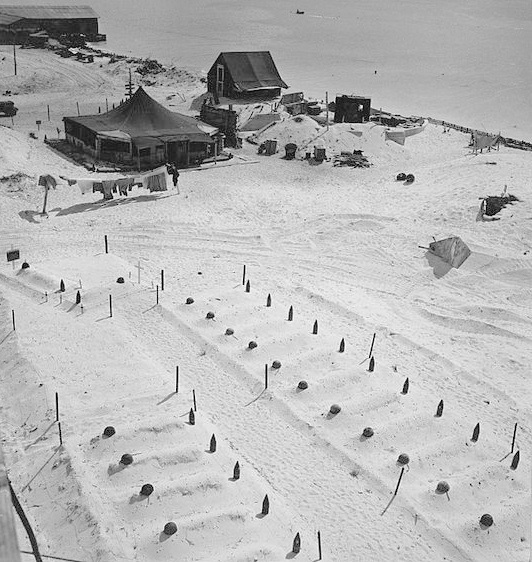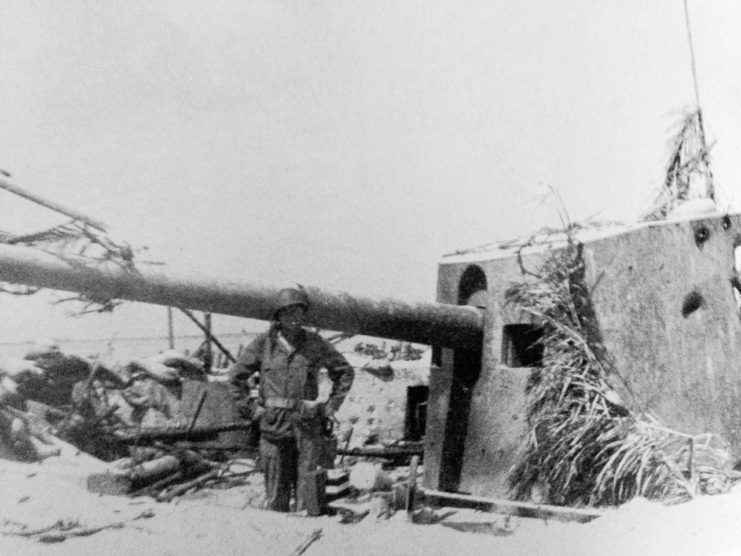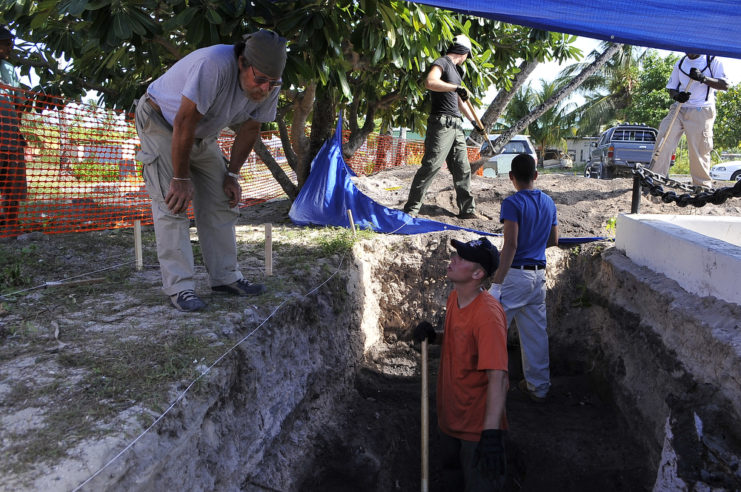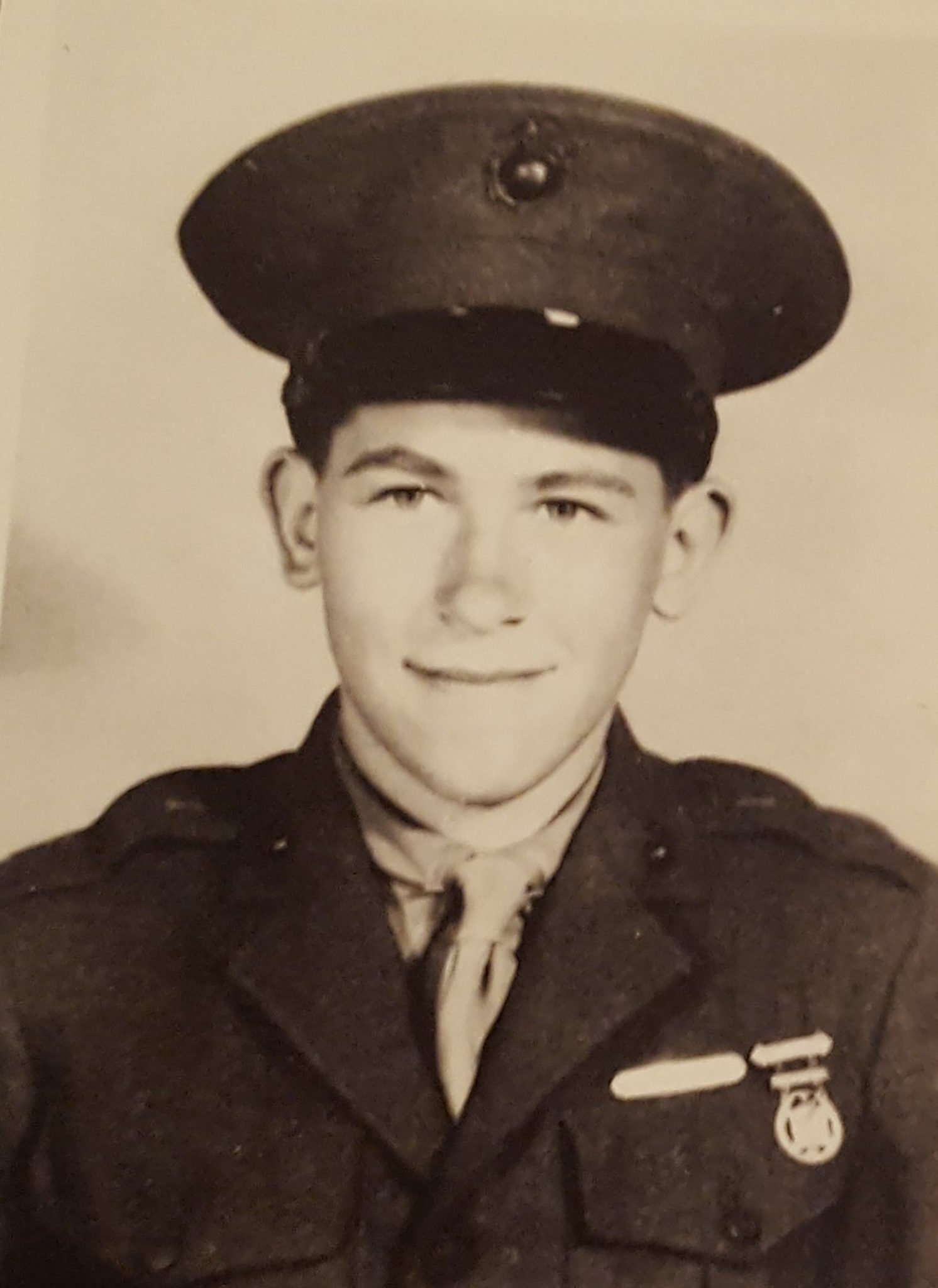In three days of intense fighting, more than six and a half thousand American, Japanese and Korean soldiers were killed in the Battle of Tarawa. Many bodies were never found, and a number of victims were marked as MIA, or missing in action.
One of these men, a fallen US Marine called Thomas Frank Johnson, has, at last, been identified and his remains have been repatriated to his hometown of Red Bluff, California, where his relatives still live. Johnson died on the 22nd November 1943, and in a poetic twist was buried almost exactly seventy-seven years later on the 23rd November 2020.

The Battle of Tarawa was the first serious incursion by the American military in the Central Pacific area, taking on a Japanese garrison of 4,500 troops, who were well supplied and ready for the US marines when they made landfall. Up to Tarawa the US had met little resistance during amphibious landing assaults, but this time it was very different.
The Tarawa Atoll is some 2,400 miles south west of Pearl Harbour, and a strategic forward military position for the Japanese Imperial forces. It had to be taken by the Americans in order to forge a bridgehead into the Western Pacific. The eventual target was the Philippines, but to get there the US had to take the Marianas and Marshall Islands first.

Standing in their way was the tiny island of Betio to the extreme south west of the Tarawa Atoll. At only 800 yards wide and two miles long it was a tiny piece of territory, but perfectly placed. The Japanese commander Rear Admiral Tomonari Saichirō was an experienced engineer, who spent months reinforcing the island’s defences building numerous machine gun positions and firing pits.
More than 2,000 men were drafted in for an entire year to construct the new defences, and in the early morning light of November 20th they were put to work against the US Navy. A gunfight started up in the pre-dawn light with the Japanese 8 inch guns taking on the US Maryland and US Colorado, whose counter-fire proved deadly accurate, taking out a munitions store and causing an explosion that crippled the island’s big guns.
Unfortunately for the US forces this early success was countered by a neap tide, which meant that the sea level did not rise as far as required for the amphibious landing craft to be able to traverse the reef that protected the beach. The attack went ahead nonetheless with Higgins boats able to reach the reef, some 500 yards from shore, while the tracked ‘Alligator’ LTVs could climb over any obstruction.
By the 22nd, the overwhelming firepower of the US Navy had pushed the Japanese forces back into a narrow strip of land to the east of the Tarawa airstrip and tiny pockets of resistance up and down the tiny island. A counterattack late that evening killed another 45 marines and injured more than a hundred, but with support from the US Schroeder and US Sigsbee the Japanese were driven back once more, losing more than 300 men.
It is incredible to imagine that in such a small area of land any soldier could lose their lives and their identity, but it happened to many of the marines that made the ultimate sacrifice during the Battle of Tarawa.

Six years ago, a surviving niece of Thomas Frank Johnson was invited to give a DNA sample as part of the program to identify and repatriate the soldiers buried on the atoll. Kathleen Vanatta forgot all about it and was shocked when she received a call in May 2019 telling her there had been a match.
Private First-Class Johnson was flown to Sacramento and an honour guard of fire trucks, police cruisers and patriot guard accompanied him home to Red Bluff California.
‘It was very amazing, and I was very happy,’ she said, ‘It was very emotional, there are people across the overpasses with flags and waving saying welcome home marine.’
Another Article From Us: Falkland Islands Declared Mine-Free After 10-year Effort, Four Decades After End Of War
He was buried in Redding, next to his brother, Kathleen Vanatta’s father. Another brother, Hugh, died just days later on another island and remains missing in action.
